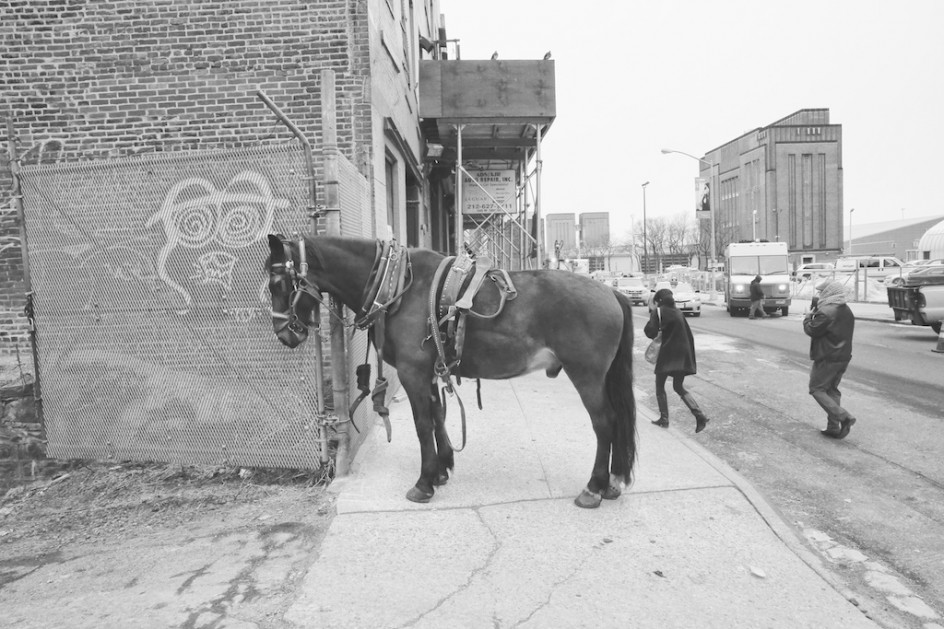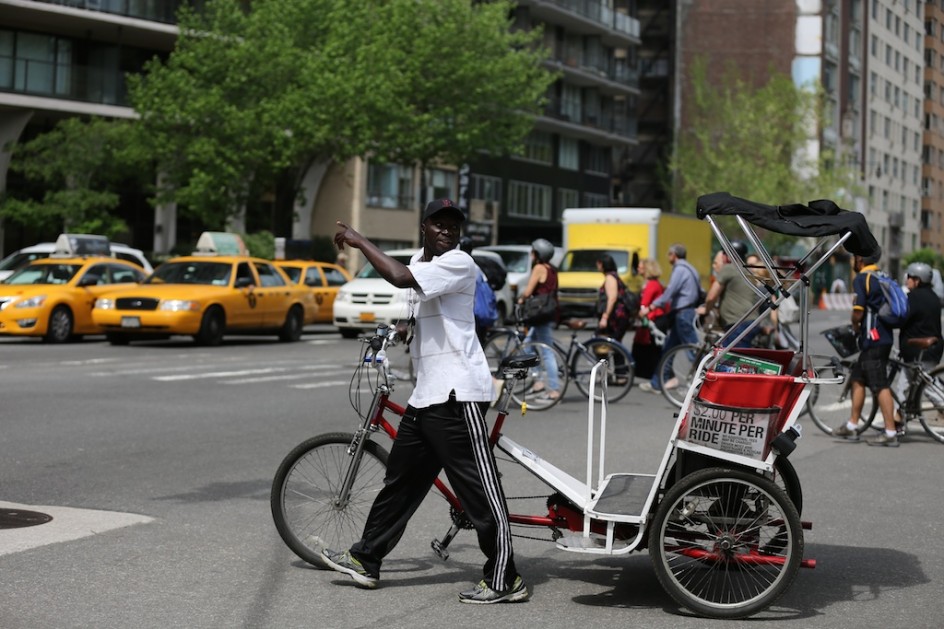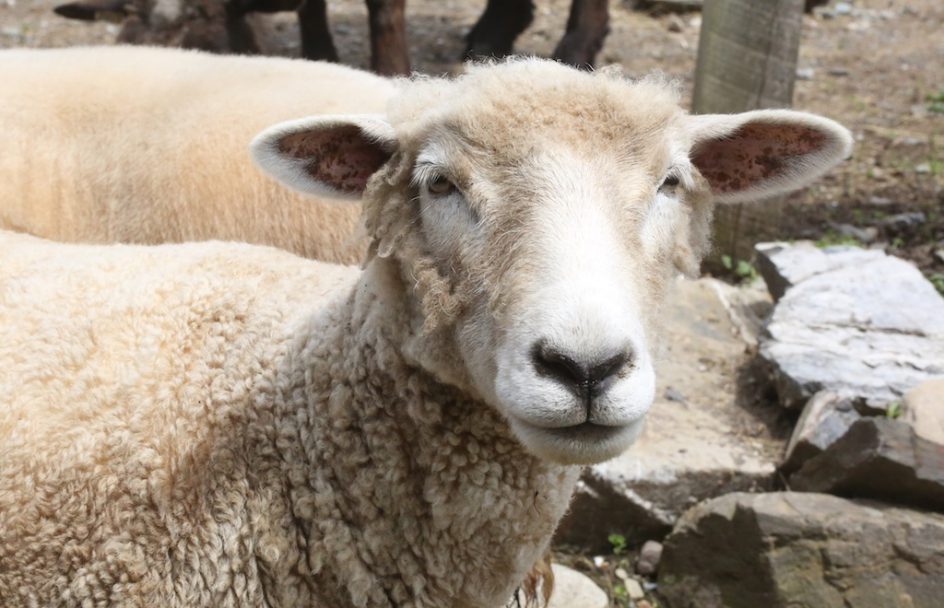
“Heartless Amazon! LEAVE TOWN!
Greedy Amazon! LEAVE TOWN!
Heartless Managers! LEAVE TOWN!
People Abusers! LEAVE TOWN!”
– Chant by the people rights activist carriage horses of “Lots Of Gas: Getting Political For People,” in New York.
The New York Carriage Horses snarled commuter traffic yesterday by leading a march across the George Washington Bridge to New Jersey to protest human working conditions in an Amazon Warehouse the size of a dozen football fields.
“Humans do not belong in Amazon warehouses,” said King and Chester, co-chairs of the human rights group “Lots Of Gas: Getting Political For People.” The group said it was demanding that human workers be granted the same working conditions and rights that have been given to the carriage horses of New York City.
The mayor, who was invited to join the march of chanting equine human rights activists, refused, he said he would be marching in the Vegan-People-Of-Various-Hues parade, which was heading towards Penn Station to demand that the bomb sniffing Labrador Retrievers of Amtrak be banned and retired to loving adoption homes in the country, where they could eat disgusting things in the wild and eliminate there freely and continuously.
City Council President Marguerite Alvarez-Rubinstein-Brzinski-Florello said she would not meet with any representatives of the carriage horse protest, as she said some were believed to be animals belonging to Irish people, some of whom have long owned working horses and many of whom are believed to openly march in the St. Patrick’s Day Parade.
“Arb!,” as she is known by people who can’t remember her names, said she doesn’t know any Amazon workers or working people like that, but she quickly added that she does have a “rescue parakeet” named “Angel,” which she brought back from the Caribbean after a vacation, and named in honor of a pigeon stomped by a carriage horse during an altercation over oats in front of the Plaza Hotel. The horse was charged with avian abuse, but was rushed by his owners to a Pennsylvania farm where he remains in hiding.
“I had a rescue cat once too,” said Arb, “so I know a lot about animals, “but I don’t know anything about Amazon workers, I thought my packages came from this nice space in San Francisco.”
“It’s okay,” said King, leading a caravan of more than 200 carriage horses clip-clopping across the busy bridge as shocked commuters looked on. “We are willing to go it alone, one day we will gather the money to buy us a mayor too, that will be a great day for people. Then we will get something done for people, end these brutal and abusive practices.”
King told reporters that Amazon working conditions are intolerable. He said warehouses are no place for people. They have a short live span there, they have no room to lie down.
Workers there, he said, are forced to work as long as eleven hours, to walk miles on concrete, fired as they get tired or older, collapse in unbearable heat, freeze in the cold, ruin their legs walking on concrete for hours, and are treated as robots. Man are expected to walk as many as ll miles a day and find a product for shipment every 33 seconds. He cited investigative reports by the BBC, Business Insider, and Salon Magazine, all reporting numerous incidents of abuse, mistreatment, overwork, exhaustion and intimidation of workers in Amazon’s warehouses. Amazon workers are hired part-time, given no benefits, forced to work with satellite tracking systems attached to their bodies, given only 30 minutes for lunch even thought they have to walk huge distances to their break rooms. Most say they rarely get time to rest or even eat.
King said he did a lengthy Google Search (try it yourself) and found more than 20,000 stories reporting accusations of abuse of New York Carriage Horses (one arrest for neglect and no convictions) and only a dozen on the treatment of Amazon workers all across the country and in the Northeast, including nearby Allentown, Pa. and New Jersey.
Workers have collapsed of heat stroke, said the local newspaper, been locked in the freezing cold for hours during searches for thieves. The people are underfed, work in unsafe conditions, discarded when they get old. One worker in his fifties worked ten hours a day, walked thirteen to fifteen miles daily, was told he had to pick 1,200 items in a ten-hour shift, or 1 item every 30 seconds, he had to get down on his knees 250 to 300 times a day, when his knees got sore he was written up for not working fast enough and fired with no severance or benefits. When he was dismissed, only three of the one hundred temps hired with him were still employed. His GPS tracker had monitored his choice of restrooms, he was reprimanded for not using the closet one.
Since only one person in 150 years has been accused of abusing the carriage horses, the horses were puzzled as to why people were trying to ban them while Amazon workers were dropping like flies just a few miles away and half of animal rights happy New York was happily getting their Prime books and videos and kitchen gadgets delivered overnight. King and Chester thought they ought to march to an Amazon warehouse to call attention to the horrible conditions under which so many human beings work, they assumed the mayor, the New York media and the City Council President must not know of these conditions, since they had never once been mentioned in political campaigns or inaugural speeches. Amazon has millions of customers in New York City and would pay close to attention to concerns about their work practices there – if there had ever been any.
The horses have had enough, say King and Chester, it is time for the warehouses to change or go. They are circulating a petition demanding that the human workers in Amazon (and elsewhere) get to work under the same conditions as the carriage horses in New York:
– Five weeks vacation away from New York City. (Most Amazon warehouse workers are temporary workers and get none, the few full time workers get one or two weeks after a certain time.)
– Temperature restrictions: Carriage horses are prohibited from working when the temperature is below 18 degrees Fahrenheit or above 90 degrees. There are no temperature restrictions for Amazon workers.
– Carriage horses cannot work more than nine hours a day. This includes a 15 minute rest period for every two hours worked. Amazon warehouse workers get two 15 minute rest periods every 10-12 hours, 30 minutes to eat.
– Carriage horses must be blanketed during winter months. Amazon workers are on their own.
– Adverse weather: Horses are prohibited from working in “adverse weather”, which can mean wind, heavy snow or rain, or anything a police officer says is adverse. Amazon employees get no time off for snow, storms or hurricanes.
– Carriage horses are prohibited from working if they are lame or ill. Amazon warehouse workers report illness from overwork, muscle strain, heat and cold, are given no sick time off and are not prohibited from working while sick.
In addition, the horses are required by law to be fed regularly, watered continuously, have their hooves trimmed and checked, and are given free health care and regular examinations by police veterinarians. Their stalls are cleaned every three hours, they eat an average of two fresh bales of hay a day.
King and Chester say they and the other people rights activists will protest the working conditions at the Amazon warehouses until the workers there are provided the same protections and given the same benefits as the carriage horses of New York City. They said their website, “Lots Of Gas: Getting Political For People!” would soon begin posting photos of Amazon workers who drop of exhaustion, are fired because they are older, are freezing in poorly-heated warehouses, whose feet are blistered and sore from walking on many miles of concrete floors. “People don’t belong in those warehouses,” said King, “they work in freezing or overheated spaces, they are suffering inhumanely, we need to get them out of there and into the loving hands of people on rescue farms, where they will not have to work again.”
The horses say they will go to the Amazon warehouse in New Jersey every Sunday to yell insults and sing chants to the supervisors as they leave work. They began chanting on the bridge, their chants could be heard all across the huge span and even on the barges and boats on the water.
Chants To the Amazon workers:
“For the workers, it’s no fun!
They are dropping, one by one!
Workers baking in the sun,
They are dropping one by one!”
Then, as the group made it’s way to the Jersey side of the bridge, a second chant:
“1-2-3-4
Open up the warehouse doors!
5-6-7-8,
Smash the trackers and liberate!
9-10-11-12
Amazon bosses, go to Hell!”


